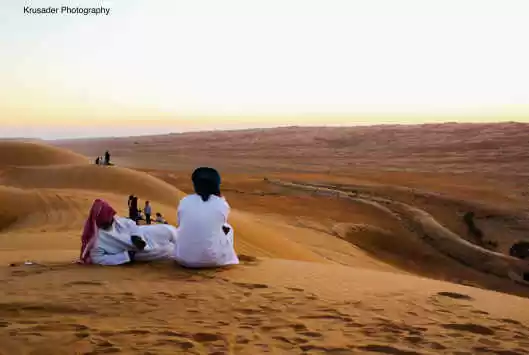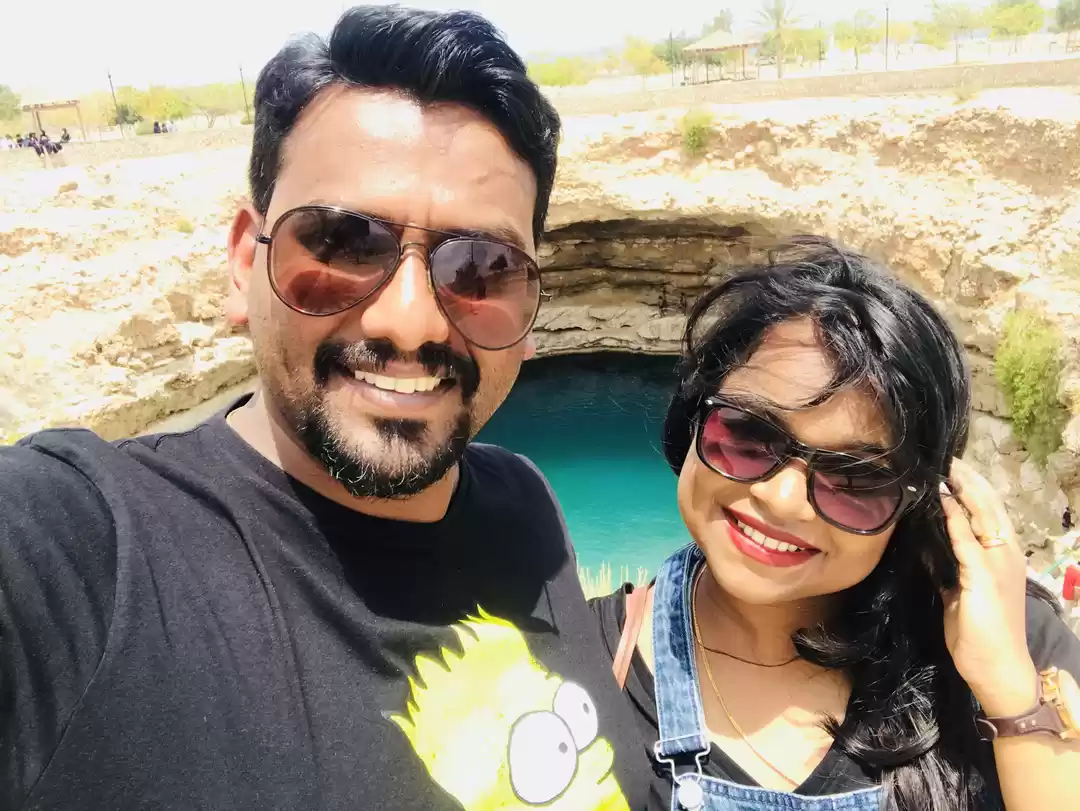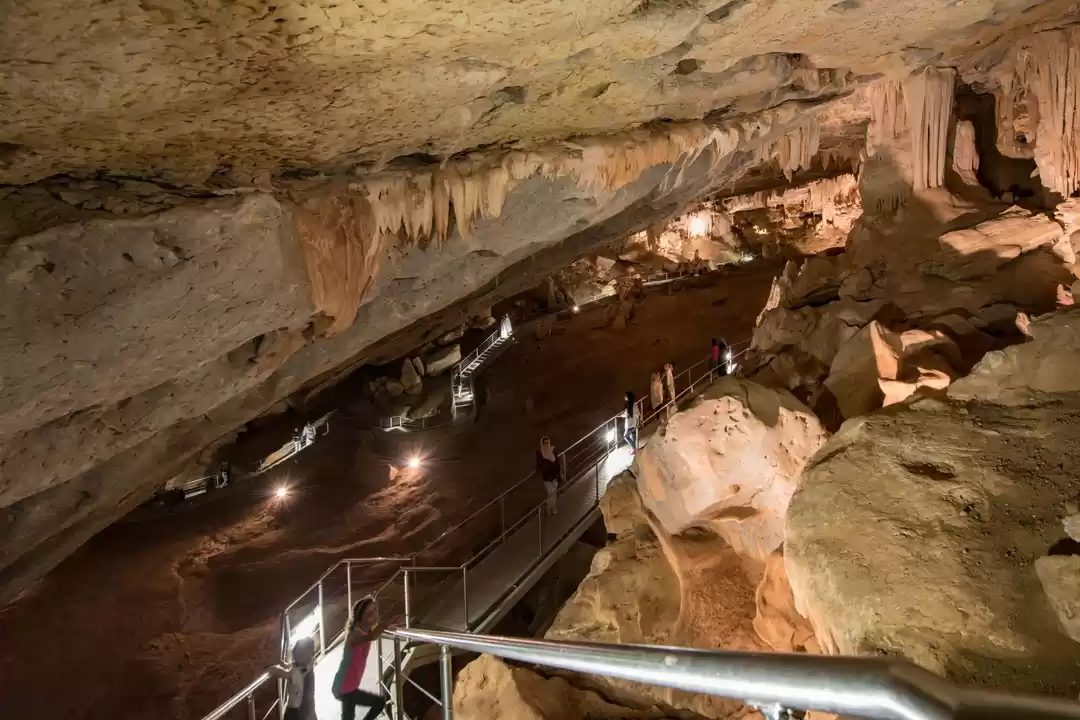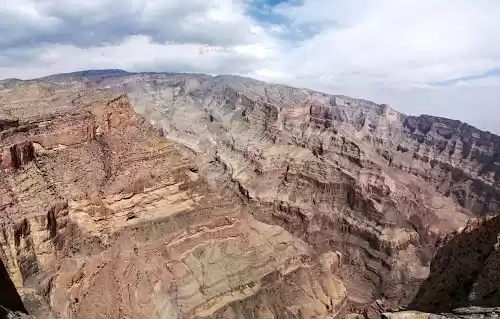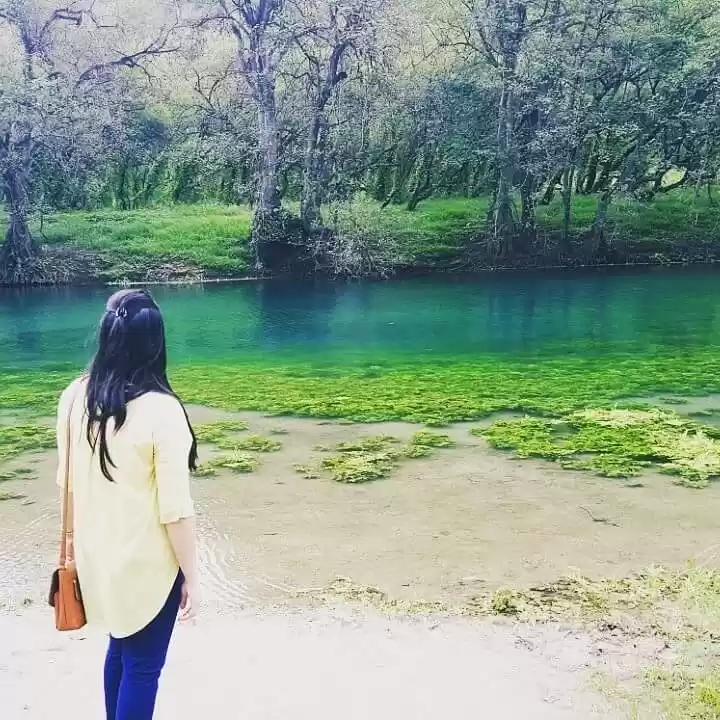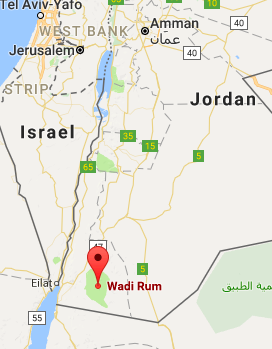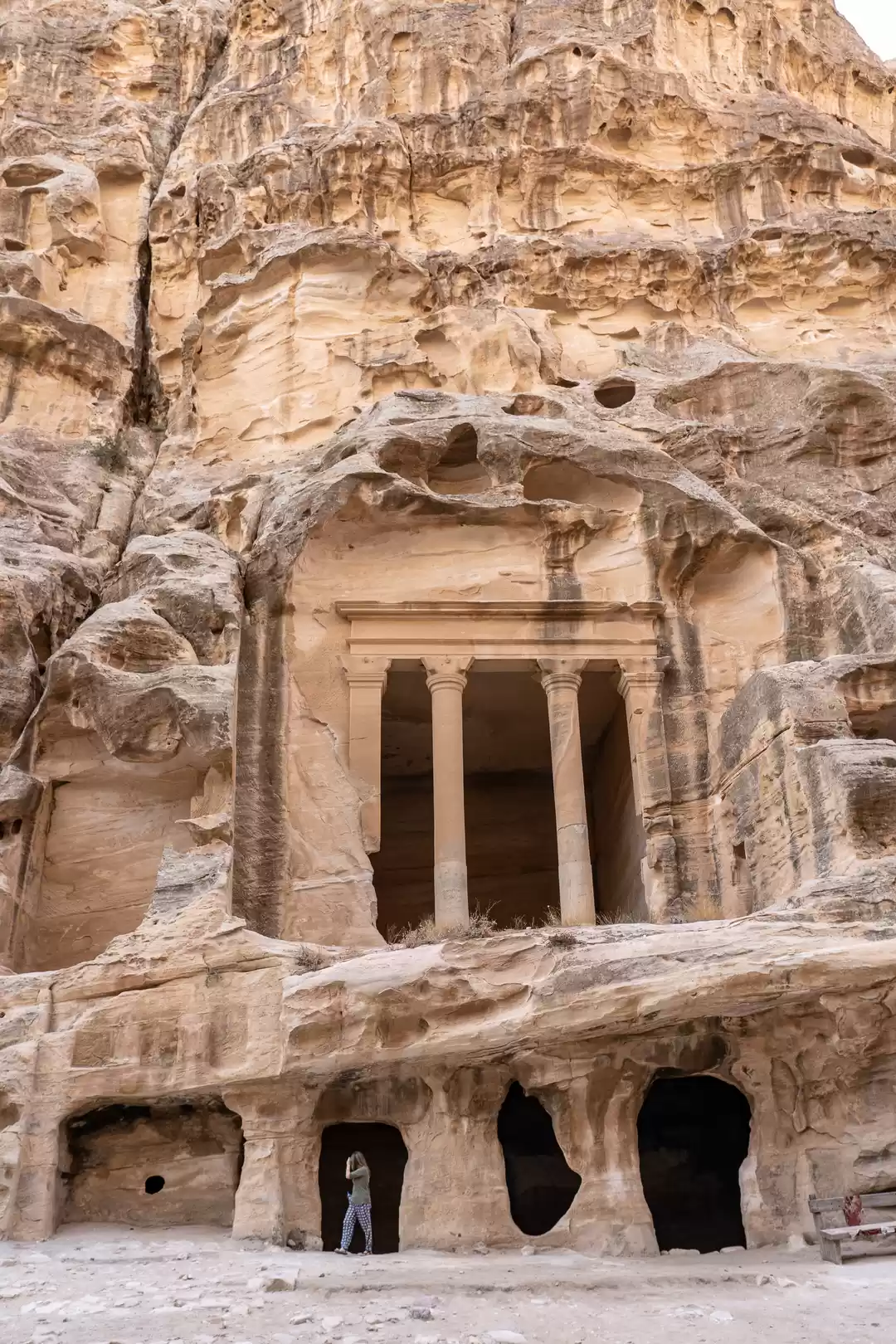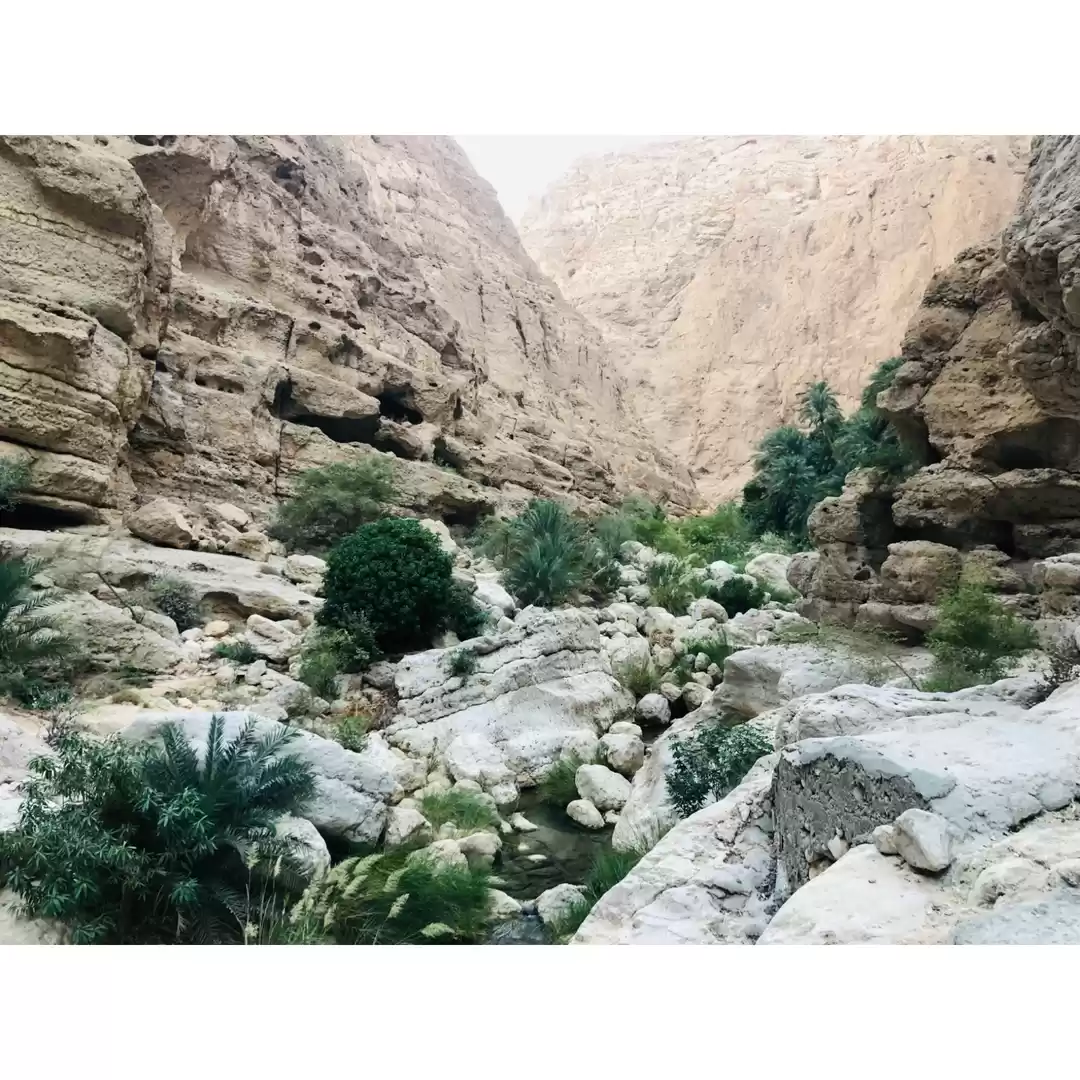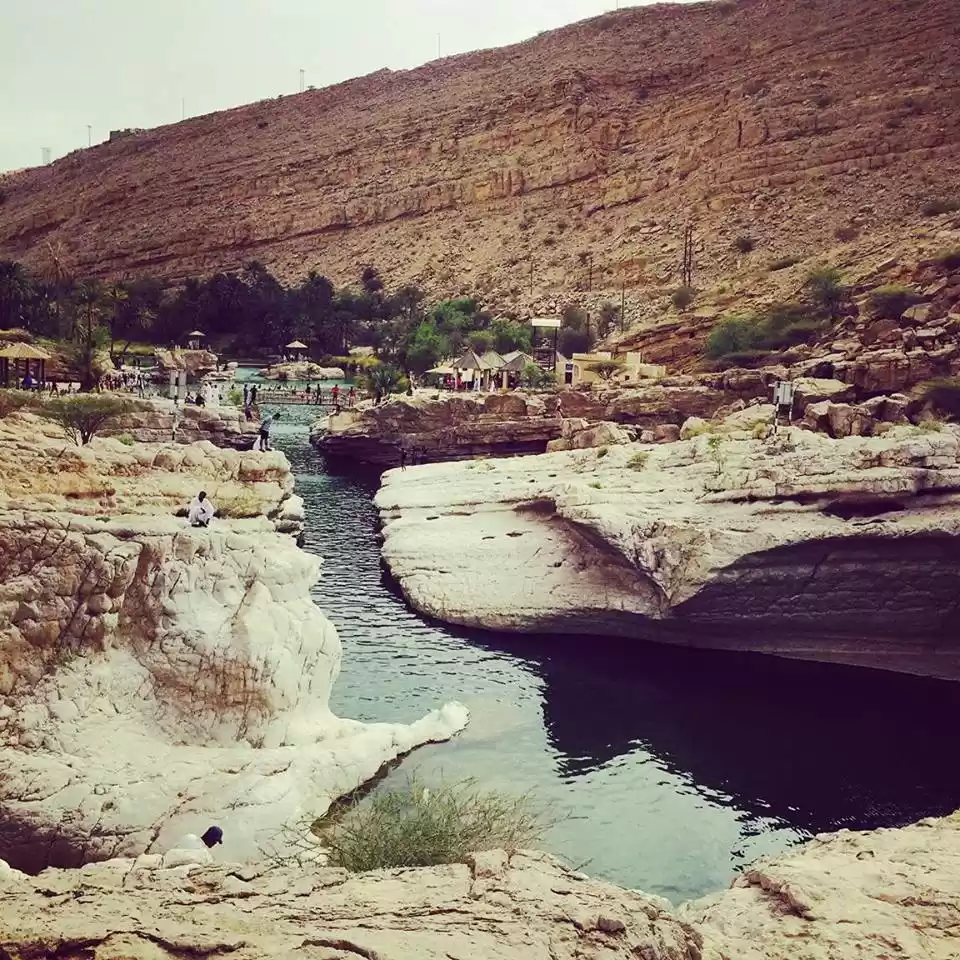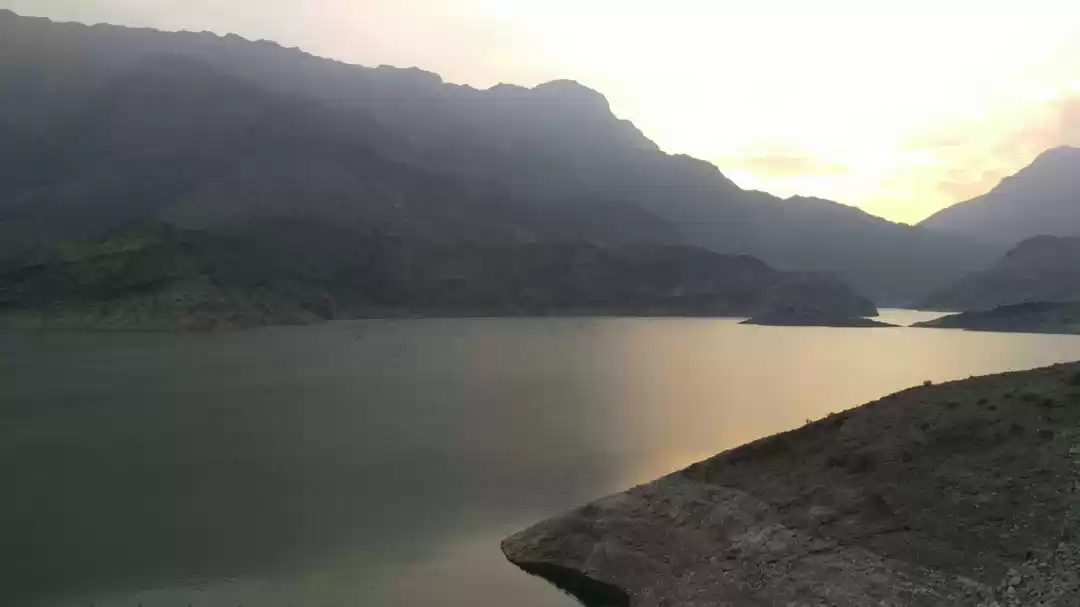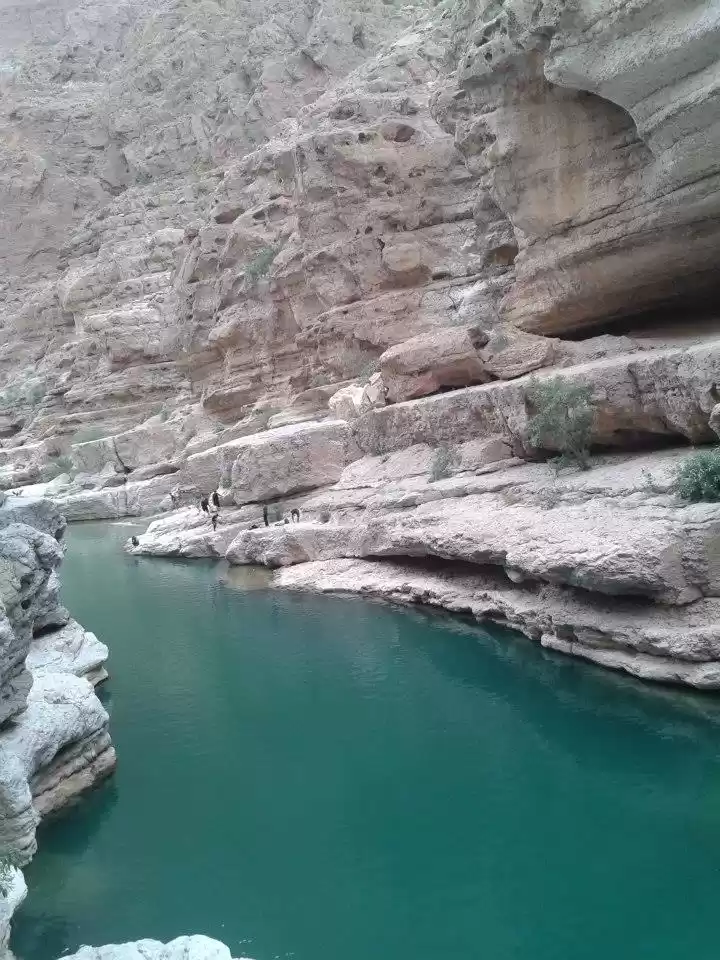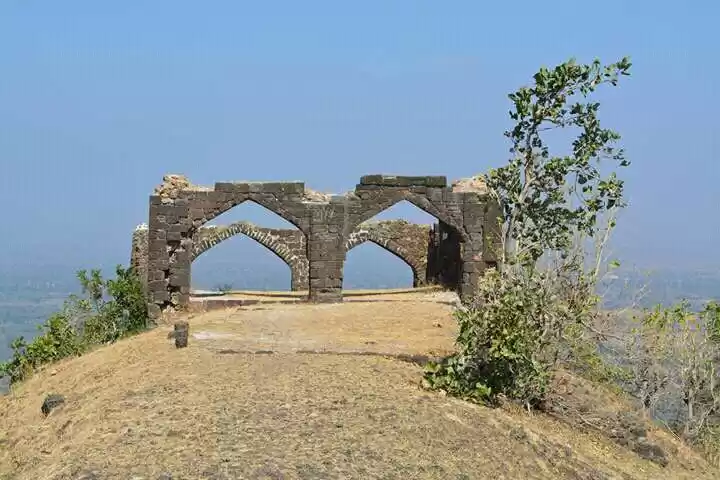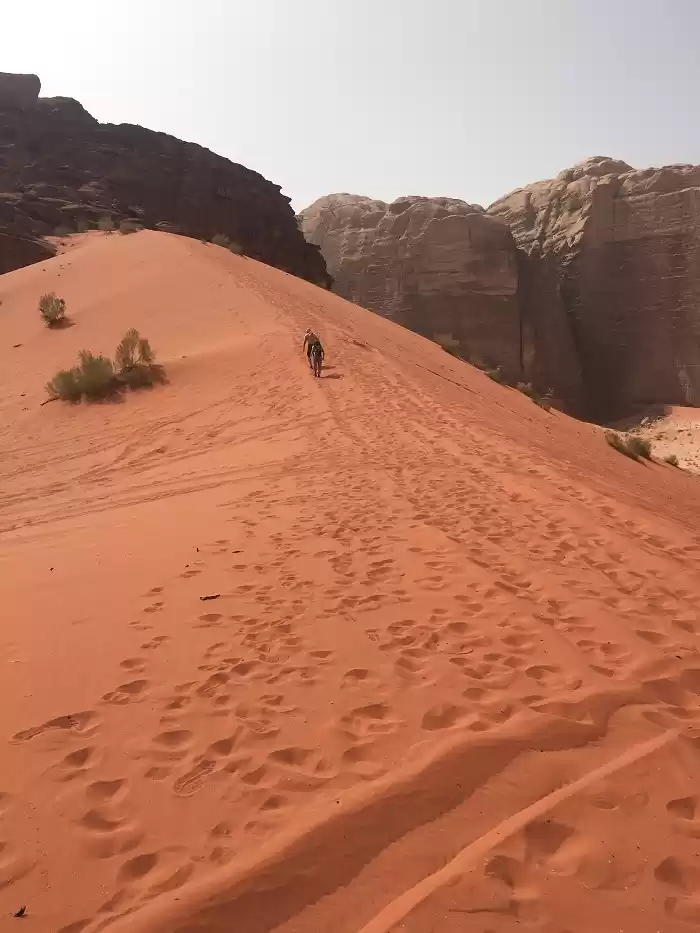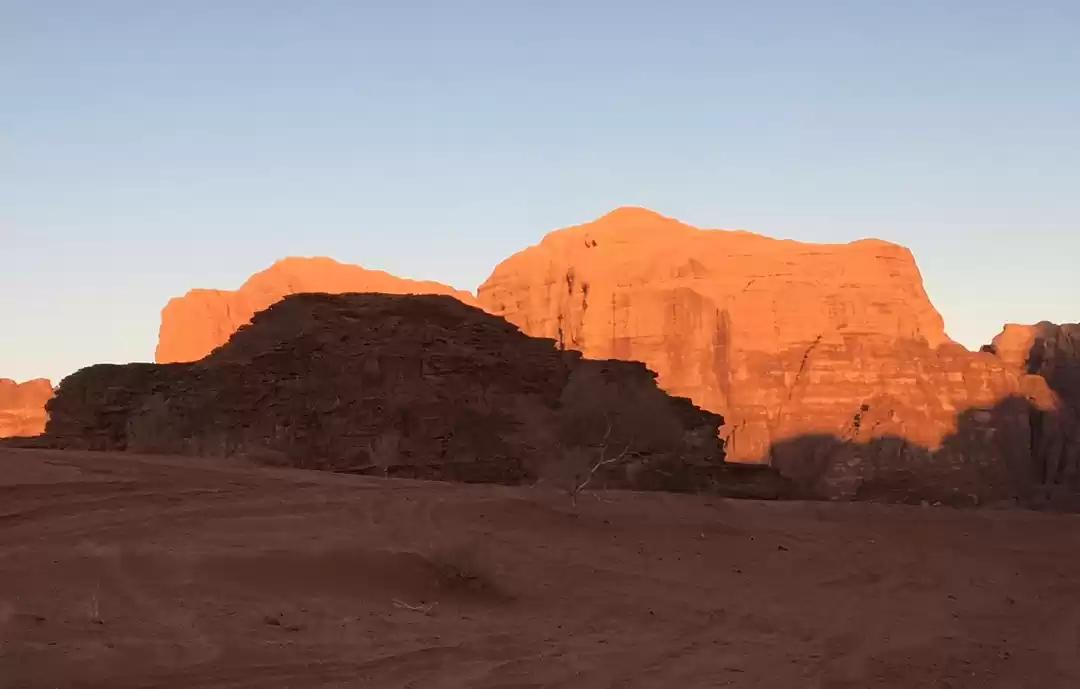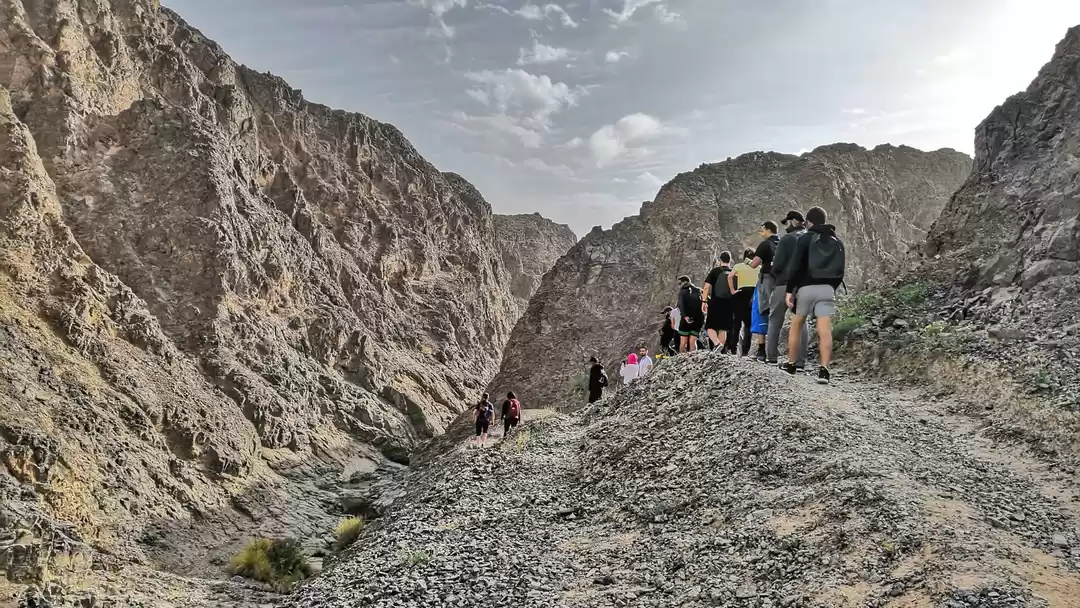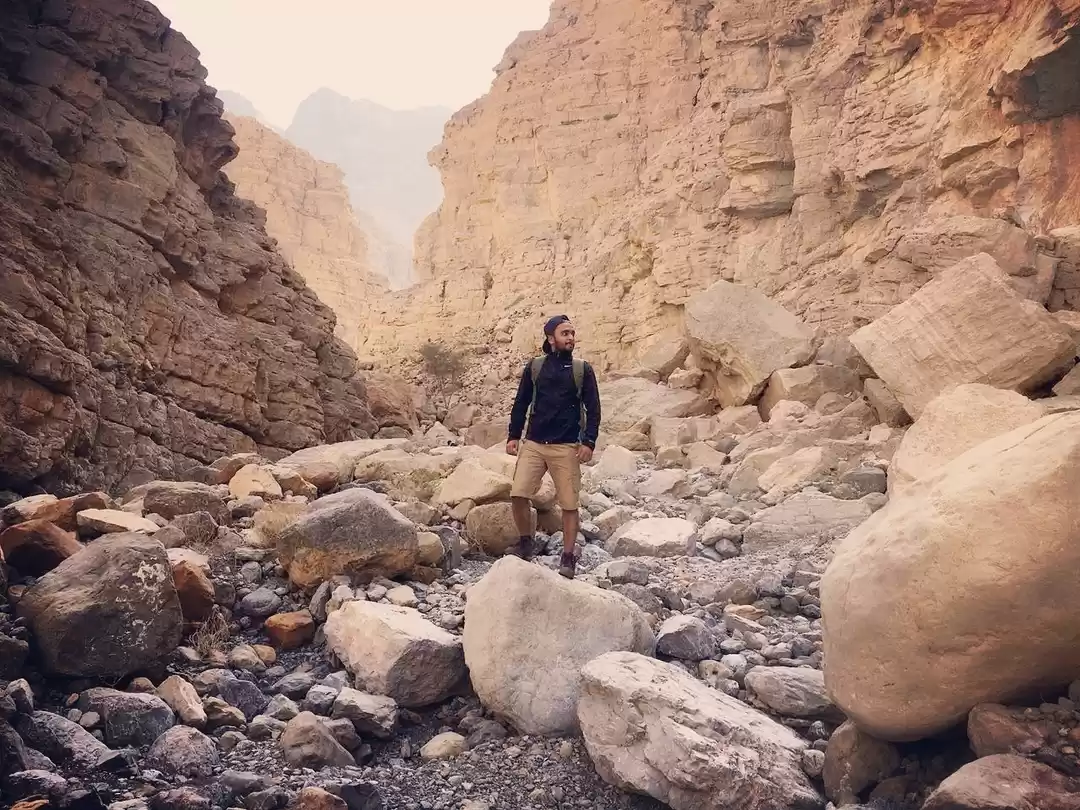Wadi Darbat is a natural wonder that will take your breath away. Located in the Dhofar region of Oman, this wadi is a paradise for nature lovers, adventure seekers, and culture enthusiasts. Whether you want to admire the majestic waterfall, swim in the turquoise lake, explore the mysterious cave, hike through the lush greenery, or discover the ancient history, Wadi Darbat has something for everyone. In this article, you will find everything you need to know about Wadi Darbat, including how to get there, when to visit, what to do, what to bring, and where to stay. Read on and get ready to plan your trip to Wadi Darbat, Oman’s most beautiful wadi.
What is a Wadi and Why You Should Visit One
A wadi is a valley or a dry riverbed that fills with water during the rainy season. Wadis are common in arid and semi-arid regions, such as the Middle East and North Africa. Oman is home to over 100 wadis, each with its own unique features and attractions. Wadis are not only scenic, but also rich in biodiversity, as they provide habitats for various plants and animals. Wadis are also important for the local culture, as they have been used for irrigation, agriculture, and trade for centuries.
Visiting a wadi is a must-do activity when you are in Oman, as it will give you a chance to experience the country’s natural beauty, wildlife, and heritage. You will be amazed by the contrast between the dry and barren landscape and the lush and verdant oasis. You will also be able to enjoy a range of activities, such as swimming, boating, hiking, camping, and exploring. Wadi Darbat is one of the most popular and spectacular wadis in Oman, and you should not miss it.
How to Get to Wadi Darbat
Wadi Darbat is located about 40 kilometers east of Salalah, the capital of the Dhofar region. The easiest and most convenient way to get to Wadi Darbat is by car, as you will have more flexibility and freedom to explore the area. You can rent a car from Salalah airport or from the city center, and follow the signs to Wadi Darbat. The drive will take about an hour, and you will pass by some scenic views and landmarks along the way, such as the Al Baleed Archaeological Park, the Taqah Castle, and the Khor Rori Lagoon.
You can also take a bus or a taxi from Salalah to Wadi Darbat, but they are less frequent and more expensive. The bus will drop you off at the main entrance of the wadi, and you will have to walk or hitchhike to the waterfall and the lake. The taxi will take you to the waterfall and the lake, but you will have to negotiate the price and the waiting time. Alternatively, you can join a guided tour or a group excursion from Salalah, which will include transportation, entrance fees, and a guide.

Here are some tips on how to get to Wadi Darbat:
The road to Wadi Darbat is paved and well-maintained, but it can get narrow and winding in some parts. Drive carefully and watch out for speed bumps, camels, and other vehicles.
There is a parking lot near the waterfall and the lake, where you can leave your car for free. However, it can get crowded and chaotic during peak hours and weekends, so try to arrive early or late to avoid the rush.
The entrance to Wadi Darbat is free, but you may have to pay a small fee for some activities, such as boating, camping, or visiting the archaeological sites.
The GPS coordinates for Wadi Darbat are 17.0667° N, 54.4833° E. You can also use Google Maps or Waze to navigate your way to Wadi Darbat.
When to Visit Wadi Darbat
The best time to visit Wadi Darbat depends on what you want to see and do. Wadi Darbat is open all year round, but the water level and the weather vary depending on the season. The two main seasons in Oman are the dry season and the monsoon season, also known as the Khareef.
Dry Season
The dry season lasts from October to May, and it is characterized by hot and sunny weather, with temperatures ranging from 25°C to 35°C. The water level in Wadi Darbat is low during this season, and the waterfall is reduced to a trickle. However, the lake is still full and clear, and you can swim, boat, or fish in it. The cave is also accessible and worth exploring, as it has some interesting rock formations and stalactites. The dry season is ideal for hiking, camping, and birdwatching, as you will have more visibility and less humidity. You will also have more peace and quiet, as there will be fewer tourists and locals.
Monsoon Season
The monsoon season lasts from June to September, and it is unique to the Dhofar region, as it receives the Indian Ocean monsoon. The weather is cooler and wetter, with temperatures ranging from 20°C to 30°C, and occasional rain showers. The water level in Wadi Darbat is high during this season, and the waterfall is spectacular, as it cascades down from a height of over 100 meters. The lake is also fuller and greener, and you can still swim, boat, or fish in it, but be careful of the strong currents and the slippery rocks. The cave is not accessible during this season, as it is flooded and dangerous. The monsoon season is ideal for sightseeing, photography, and picnicking, as you will witness the transformation of the landscape, from brown and dry to green and lush. You will also experience the festive atmosphere, as there will be more tourists and locals celebrating the Khareef.
Some tips on when to visit Wadi Darbat
- The best months to visit Wadi Darbat are November and December, during the dry season, and July and August, during the monsoon season, as you will see the wadi at its best, with optimal water level and weather conditions.
- The best days to visit Wadi Darbat are weekdays, especially Tuesday, Wednesday, and Thursday, as you will avoid the crowds and the traffic, and have more space and privacy.
- The best hours to visit Wadi Darbat are early morning and late afternoon, as you will avoid the heat and the glare, and enjoy the best light and views.
What to Do in Wadi Darbat
Wadi Darbat offers a variety of activities for all tastes and preferences. You can choose to relax and admire the scenery, or to explore and experience the adventure. Here are some of the top things to do in Wadi Darbat:

Admire the Waterfall
The waterfall is the main attraction and the highlight of Wadi Darbat. It is located at the end of the wadi, where the water drops from a cliff into a deep pool. The waterfall is impressive and mesmerizing, especially during the monsoon season, when it is at its fullest and loudest. You can view the waterfall from different angles and distances, depending on your preference and courage. You can park your car near the waterfall and walk to the edge of the cliff, where you will have a panoramic view of the waterfall and the Salalah Plain below. You can also drive or hike to the top of the cliff, where you will have a closer view of the waterfall and the pool. You can even swim or boat to the base of the waterfall, where you will feel the spray and the power of the water. However, this is not recommended for beginners or children, as the water can be deep and turbulent.
Swim in the Lake
The lake is another attraction and a delight of Wadi Darbat. It is located in the middle of the wadi, where the water collects and forms a large and serene body of water. The lake is beautiful and inviting, especially during the dry season, when it is clear and blue. You can swim in the lake, as the water is clean and refreshing, and the temperature is pleasant. You can also boat or kayak in the lake, as there are several vendors who rent out boats, kayaks, and paddle boats for a reasonable price. You can enjoy the scenery and the tranquility of the lake, as well as the wildlife, such as fish, turtles, and birds. However, you should be careful of the water quality and the hygiene, as the lake can get polluted and contaminated by the visitors and the animals.
Explore the Cave
The cave is a hidden gem and a mystery of Wadi Darbat. It is located at the beginning of the wadi, where the water flows out of a small opening in the rock. The cave is intriguing and adventurous, especially during the dry season, when it is accessible and safe. You can explore the cave, as it is spacious and well-lit, and has some interesting features, such as rock formations, stalactites, and stalagmites. You can also see some ancient inscriptions and drawings on the walls of the cave, which indicate that the cave was used by humans in the past. However, you should be careful of the darkness and the bats, as the cave can get dark and spooky, and you may encounter some bats flying around.
Hike through the Greenery
The greenery is a surprise and a contrast of Wadi Darbat. It is located throughout the wadi, where the water irrigates and nourishes the vegetation. The greenery is stunning and refreshing, especially during the monsoon season, when it is lush and vibrant. You can hike through the greenery, as there are several trails and paths that lead you to different parts of the wadi. You can enjoy the views and the smells of the greenery, as well as the wildlife, such as camels, goats, cows, and birds. However, you should be careful of the insects and the snakes, as the greenery can also attract some unwanted guests.
Discover the History
The history is a treasure and a legacy of Wadi Darbat. It is located near the wadi, where there are several archaeological sites and monuments that date back to different periods and civilizations. The history is fascinating and educational, as it reveals the importance and the influence of Wadi Darbat in the past. You can discover the history, as there are some signs and guides that explain the significance and the features of each site. You can visit the following historical places near Wadi Darbat:
Tawi Attair: Also known as the Bird’s Well, this is a huge sinkhole that measures 211 meters in diameter and 150 meters in depth. It is one of the largest and deepest sinkholes in the world, and it has a stunning view of the honeycombed limestone. It is also home to many birds, such as eagles, falcons, and swifts, which nest and fly in and out of the sinkhole.
Sumhuram: Also known as Khor Rori, this is an archaeological park that contains the ruins of an ancient port city that was founded by the Hadramites in the 1st century BC. It was a major trading center for frankincense, and it had connections with India, China, and Rome. It also has a museum that displays some artifacts and information about the site.
Mirbat: This is a town that was once a prosperous fishing and trading port, and it still retains some of its old charm and character. It has a fort, a mosque, a souq, and some old houses that reflect the traditional architecture and culture of the region. It also has a beach, where you can relax and enjoy the sea breeze.
What to Bring to Wadi Darbat
Wadi Darbat is a place where you can have fun and adventure, but you also need to be prepared and equipped for it. Depending on the season, the activity, and the duration of your visit, you should bring the following items and equipment to Wadi Darbat:
Water: This is the most essential and important item that you should bring to Wadi Darbat, as you will need to stay hydrated and refreshed in the hot and dry climate. You should bring at least two liters of water per person, and more if you plan to hike, camp, or do any strenuous activity. You should also avoid drinking the water from the wadi, as it may be contaminated or unsafe.
Food: This is another essential and important item that you should bring to Wadi Darbat, as you will need to replenish your energy and satisfy your hunger after a long and exciting day. You should bring some snacks, such as nuts, fruits, bars, and sandwiches, and some meals, such as rice, pasta, or canned food, if you plan to camp or stay overnight. You should also avoid eating the food from the vendors or the locals, as it may be unhygienic or unsuitable for your diet.
Sunscreen: This is a vital and necessary item that you should bring to Wadi Darbat, as you will need to protect your skin from the harsh and damaging sun rays. You should bring a sunscreen with a high SPF, and apply it generously and frequently on your exposed skin, especially your face, neck, arms, and legs. You should also reapply it after swimming or sweating, as it may wear off or wash away.
Hat: This is a useful and helpful item that you should bring to Wadi Darbat, as you will need to shield your head and eyes from the bright and glaring sun. You should bring a hat with a wide brim, and wear it whenever you are outdoors, especially during the peak hours of the sun, from 10 am to 4 pm. You should also choose a hat that is light and breathable, as it may get hot and stuffy under it.
Sunglasses: This is another useful and helpful item that you should bring to Wadi Darbat, as you will need to protect your eyes from the intense and dazzling sun. You should bring a pair of sunglasses with a high UV protection, and wear them whenever you are outdoors, especially near the water, as it may reflect and magnify the sun. You should also choose a pair of sunglasses that is comfortable and durable, as it may get scratched or broken during your visit.
Swimsuit: This is a fun and optional item that you should bring to Wadi Darbat, as you may want to enjoy the water and the swimming in the wadi. You should bring a swimsuit that is appropriate and modest, as you may encounter some conservative and religious locals or tourists, who may be offended or uncomfortable by your attire. You should also bring a towel, a change of clothes, and a plastic bag, to dry yourself and to store your wet clothes.
Shoes: This is a crucial and essential item that you should bring to Wadi Darbat, as you will need to walk and hike on different terrains and surfaces. You should bring a pair of shoes that is sturdy and comfortable, as you may encounter some rocks, sand, mud, and water along the way. You should also choose a pair of shoes that is waterproof and slip-resistant, as it may get wet and slippery in some parts of the wadi.
Camera: This is a fun and optional item that you should bring to Wadi Darbat, as you may want to capture and document the beauty and the memories of the wadi. You should bring a camera that is high-quality and reliable, as you may encounter some amazing and stunning views and scenes along the way. You should also bring a tripod, a battery, a memory card, and a waterproof case, to enhance and secure your camera.
Where to Stay Near Wadi Darbat
Wadi Darbat is a place where you can spend a whole day or even a night, but you may also want to explore and experience the other attractions and activities in the Dhofar region. If you are looking for a place to stay near Wadi Darbat, you have several options to choose from, depending on your budget, location, and amenities. Here are some of the best accommodation options near Wadi Darbat:
Hotels:
If you are looking for a comfortable and luxurious stay, you can opt for one of the hotels near Wadi Darbat, which offer a range of facilities and services, such as rooms, suites, restaurants, pools, spas, and gyms. Some of the top hotels near Wadi Darbat are:
Al Baleed Resort Salalah by Anantara: This is a five-star resort that is located about 35 kilometers from Wadi Darbat, and it overlooks the Al Baleed Archaeological Park and the Arabian Sea. It has 136 rooms, villas, and suites, with balconies, terraces, gardens, and pools. It also has three restaurants, a spa, a fitness center, a kids club, and a library. The price per night ranges from 150 to 500 OMR, depending on the season and the type of accommodation.
Crowne Plaza Resort Salalah: This is a four-star resort that is located about 40 kilometers from Wadi Darbat, and it is surrounded by palm trees and greenery. It has 153 rooms and suites, with balconies, views, and amenities. It also has four restaurants, a bar, a pool, a spa, a golf course, a tennis court, and a business center. The price per night ranges from 50 to 200 OMR, depending on the season and the type of accommodation.
Hilton Salalah Resort: This is a four-star resort that is located about 45 kilometers from Wadi Darbat, and it faces the Indian Ocean and the mountains. It has 147 rooms and suites, with balconies, views, and amenities. It also has six restaurants, a bar, a pool, a spa, a fitness center, a kids club, and a meeting room. The price per night ranges from 40 to 150 OMR, depending on the season and the type of accommodation.
Resorts:
If you are looking for a cozy and rustic stay, you can opt for one of the resorts near Wadi Darbat, which offer a more authentic and natural experience, such as tents, cabins, and chalets. Some of the top resorts near Wadi Darbat are:
Darbat Camp: This is a three-star camp that is located about 10 kilometers from Wadi Darbat, and it is nestled in the mountains and the greenery. It has 15 tents and chalets, with beds, bathrooms, and fans. It also has a restaurant, a barbecue area, a playground, and a campfire. The price per night ranges from 20 to 40 OMR, depending on the season and the type of accommodation.
Al Fawaz Camp: This is a two-star camp that is located about 15 kilometers from Wadi Darbat, and it is situated in the valley and the forest. It has 10 tents and cabins, with beds, bathrooms, and fans. It also has a restaurant, a barbecue area, a playground, and a campfire. The price per night ranges from 15 to 30 OMR, depending on the season and the type of accommodation.
Al Hoota Rest House: This is a two-star rest house that is located about 20 kilometers from Wadi Darbat, and it is close to the Al Hoota Cave, one of the largest and oldest caves in Oman. It has 12 rooms and chalets, with beds, bathrooms, and air conditioners. It also has a restaurant, a coffee shop, a gift shop, and a garden. The price per night ranges from 25 to 50 OMR, depending on the season and the type of accommodation.
Guesthouses:
If you are looking for a cheap and simple stay, you can opt for one of the guesthouses near Wadi Darbat, which offer a basic and minimal service, such as rooms, bathrooms, and kitchens. Some of the top guesthouses near Wadi Darbat are:
Al Noor Guest House: This is a one-star guest house that is located about 25 kilometers from Wadi Darbat, and it is in the center of Salalah. It has 10 rooms, with beds, bathrooms, and fans. It also has a shared kitchen, a lounge, and a laundry. The price per night ranges from 10 to 20 OMR, depending on the season and the type of accommodation.
Al Reem Guest House: This is a one-star guest house that is located about 30 kilometers from Wadi Darbat, and it is near the Salalah Gardens Mall, one of the largest and modern malls in Salalah. It has 12 rooms, with beds, bathrooms, and air conditioners. It also has a shared kitchen, a lounge, and a laundry. The price per night ranges from 15 to 25 OMR, depending on the season and the type of accommodation.
Al Wadi Guest House: This is a one-star guest house that is located about 35 kilometers from Wadi Darbat, and it is close to the Al Baleed Archaeological Park, one of the UNESCO World Heritage Sites in Oman. It has 14 rooms, with beds, bathrooms, and air conditioners. It also has a shared kitchen, a lounge, and a laundry. The price per night ranges from 20 to 30 OMR, depending on the season and the type of accommodation.
Wadi Darbat is a place that you should not miss when you are in Oman, as it will offer you a memorable and enjoyable experience. You will be amazed by the beauty and the diversity of the wadi, as well as the history and the culture of the region. You will also be able to have fun and adventure, as well as relax and unwind, in the wadi. Whether you visit Wadi Darbat during the dry season or the monsoon season, you will find something to suit your taste and preference.
So, what are you waiting for? Book your trip to Wadi Darbat today, and discover Oman’s most stunning wadi.
If you liked this article, please share it with your friends and family, and let us know your feedback in the comments below.
For more articles like this, please visit our website, follow us on social media, or subscribe to our newsletter. Thank you for reading, and happy travels!

